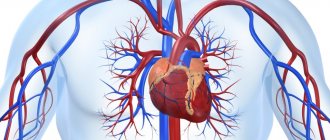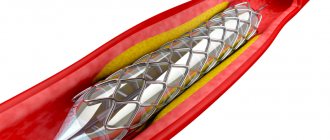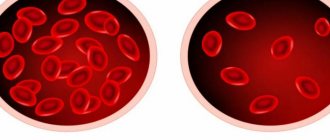DRUGS TO INCREASE HEMOGLOBIN
Many people of all ages and genders face the problem of low hemoglobin. Many people mistakenly do not attach importance to it, not suspecting that in the near future this condition can cause many problems. Hemoglobin is an important component of red blood cells. It is with its help that oxygen is delivered from the lungs to the cells and tissues of the body. But a decrease in the amount of this protein is fraught not only with oxygen starvation. Chronic iron deficiency threatens the development of anemia. This serious disease leads to decreased immunity and disruption of the cardiovascular, digestive and urinary systems of the body. Iron deficiency anemia cannot be corrected with diet alone. In such cases, it is necessary to take special iron-containing drugs.
TYPES OF DRUGS
Fast-acting drugs. This group of drugs for normalizing the level of hemoglobin in the blood is a means for intramuscular or intravenous injection. They are intended for the treatment of serious chronic cases of anemia, as well as for the treatment of iron deficiency disorders in patients with gastrointestinal pathologies. The course of therapy is prescribed by the doctor, focusing on the severity of the disease. Such drugs quickly increase the level of hemoglobin in the blood, but in terms of the duration of the effect they are inferior to oral drugs. This is due to the fact that iron absorption occurs mainly in the intestines. In addition, an injectable type of iron preparation to increase hemoglobin can cause a number of adverse reactions. Therefore, it is strictly not recommended to use them without the prescription of a specialist.
Long-acting drugs. This group includes drugs to increase hemoglobin in the blood with diagnosed iron deficiency anemia of moderate severity. Like the previous group of drugs, they belong to medications and should be taken exclusively as prescribed by a doctor. Only a specialist can choose the right drug to increase hemoglobin levels, calculate the dose and duration of the course. The effect of treatment when using long-acting agents is usually observed no earlier than three weeks after the start of therapy. Taking the drugs continues after normalization of hemoglobin levels in the blood, although the dose of the drug in this case may be reduced. The average duration of treatment is usually three months.
Preventative drugs. A separate group should include drugs intended to increase the content of iron-containing products in the body. They are not medicines and are not used to equalize hemoglobin levels in the blood or treat anemia. However, such drugs can be a good prevention of disorders, especially in people at risk. This category includes people whose diet is not rich enough in iron-containing foods, as well as those who have an increased need for this element: pregnant and lactating women, teenagers, athletes. The introduction of additional iron-containing sources into the diet does not always guarantee that the element will be absorbed and used. Therefore, the composition of such preventive supplements must be carefully verified.
Treatment of iron deficiency anemia and iron deficiency
27.05.2021
Treatment of iron deficiency anemia and iron deficiency
About modern ideas about the correction of iron deficiency and the main characteristics of iron-containing drugs, the principles of their selection and dosage in iron deficiency states. Diet for iron deficiency and sources of iron in food
The main source of iron for humans is animal products. In nature, iron exists in two chemical forms: 2-valent (heme) and 3-valent (non-heme). Heme iron is well absorbed in the intestine. The richest meats in heme iron are beef, especially beef and blood sausage. There is much less heme iron in poultry and fish. Liver (pork and veal), kidneys, heart, liver sausage are rich in ferritin and hemosiderin, containing non-heme iron (the latter is poorly absorbed in the gastrointestinal tract). A lot of non-heme iron is found in some brands of red wine, fruit juices, apples, pomegranates, buckwheat, dairy products, eggs, nuts and chocolate. The bioavailability of such iron is minimal, and all these products are not a source of iron. Vegetarianism is a strong risk factor for iron deficiency anemia (IDA) at any age. At the same time, the diet should include greens, vegetables, and fruits, since iron absorption improves with the presence of vitamin C in food. Iron absorption is impaired by tannin (found in tea and coffee), phytin (found in rice, soy flour), milk and cottage cheese due to its high calcium content. Since the absorption of iron from food is limited, drug therapy for anemia is the mainstay.
The World Health Organization (WHO) conducted a global study between 1993 and 2005, which showed that 24.4% of all inhabitants of the globe suffer from various forms of anemia. Anemia most often occurs in preschool children (47% of the general population), pregnant women (41.8%) and non-pregnant women of childbearing age (30.2%). In the structure of anemia: 37% is iron deficiency anemia, 27% is anemia due to chronic diseases (CD).
Among women of fertile age, iron deficiency anemia (IDA) occupies a leading position. Anemic syndrome is the most common hematological syndrome encountered in clinical practice. Anemia is not a diagnosis, but only a syndrome that requires a special differential diagnostic algorithm.
WHO research indicates that IDA is the third most common cause of temporary disability in women aged 15–44 years. Along with IDA itself, there is a hidden iron deficiency, which in Europe and Russia is 30–40%, in some regions – 50–60%. According to WHO, iron deficiency is determined in 20–25% of all infants, 43% in children under 4 years of age and up to 50% in adolescents (girls). Thus, the most common anemias both in Belarus and in other countries are IDA and ACD. Anemia is a leading factor in the deterioration of a patient’s well-being; according to rough estimates, it affects 2.4 billion of the world’s population.
The main reasons for the development of iron deficiency anemia are: blood loss (heavy menstrual bleeding, pregnancy, childbirth, gastrointestinal, pulmonary, kidney disease); iron absorption disorders (resection of the stomach and intestines, pancreatic insufficiency, celiac enteropathy, Crohn's disease); increased need for iron (rapid growth, premature babies, newborns, adolescents, pregnancy and lactation); insufficient dietary intake (vegetarian or vegan diet).
It must be remembered that IDA is the final stage of severe iron deficiency, in which erythropoiesis (hematopoiesis) decreases and, as a result, the hemoglobin content decreases.
There are three stages of iron deficiency:
- prelatent;
- latent;
- manifest.
Prelatent iron deficiency is characterized by a decrease in microelement reserves without a decrease in iron consumption for erythropoiesis. Latent iron deficiency is observed when the microelement reserves in the depot are completely depleted, but there are no signs of the development of anemia. Manifest iron deficiency, or iron deficiency anemia (IDA), occurs when the hemoglobin pool of iron decreases and has characteristic symptoms. A decrease in serum ferritin concentration below 12 μg/L in healthy children and 15 μg/L in adults, adjusted below 30 μg/L in children and 70 μg/L in adults with infectious or inflammatory diseases, means an inevitable decrease in hemoglobin concentration in the future.
Treatment of iron deficiency anemia. The principles of treatment of IDA include the following:
- the effect cannot be achieved with diet alone;
- Iron supplements are prescribed mainly orally, before meals;
- An improvement in the general blood test does not mean that the body’s iron supply has been restored;
- After normalization of hemoglobin levels, iron intake should be continued for another 1–2 months. with a reduction in the daily dose by half to fill the depot.
The basis of pathogenetic therapy for IDA is the use of iron supplements orally. Treatment with iron supplements should be long-term and depend on the initial severity of anemia (hemoglobin level and iron deficiency).
At the outpatient stage, treatment is carried out when the hemoglobin level is >80 g/l and the patient’s general condition is satisfactory. Oral administration of iron-containing drugs at a dose of 200-300 mg/day for 4-6 weeks until hemoglobin levels normalize, after which the drug continues at a dose of 100 mg/day for 2-3 months until the ferritin level is at least 40 μg/l. It is necessary to find the cause of iron deficiency and eliminate the cause of iron deficiency - this is treatment of the underlying disease that caused iron deficiency.
Principles for choosing an iron supplement for therapy
Currently, oral iron preparations are divided into two main groups: ionic and nonionic (the latter are represented by the protein and hydroxypolymaltose complex of ferrous iron).
Ionic preparations are represented by salts of 2-valent iron, including iron sulfate (ferrofol, tardiferon, ferroplex, sorbifer, ferro-foil, etc.); ferric chloride (hemofer); polysaccharide compounds - gluconate-fumarate combinations (heferol, ferronal, megaferrin). Ferrous chelates (citrate, lactate, gluconate, succinate) are better absorbed than ferrous sulfate. In case of intolerance to salt preparations of ferrous iron, which are currently the most effective in treating anemia and replenishing iron depots, it is possible to use nonionic preparations of ferrous iron in the form of a hydroxypolymaltose complex (maltofer, biofer, ferrum lek, etc.).
When choosing a drug and the optimal dosage regimen, it is necessary to remember that an adequate increase in hemoglobin levels in IDA can be ensured by the intake of 30 to 100 mg of ferrous iron into the body. Considering that with the development of IDA, iron absorption increases by 25–30% (with normal iron reserves in the body - only 3–7%), 100 to 300 mg of ferrous iron per day is prescribed. The use of higher doses does not make sense, since iron absorption does not increase. The degree of absorption of 2-valent iron salts is several times higher than that of 3-valent iron, therefore preparations containing 2-valent iron give a quick effect and normalize hemoglobin levels on average after 1–2 months, and normalization of iron levels in the depot occurs after 3 –4 months from the start of treatment and depends on the severity of anemia and the dose of the drug. Longer use of drugs containing iron in the 3-valent state is required; in case of copper deficiency in the body, they will be ineffective. Normalization of hemoglobin levels during treatment with a ferric iron preparation will occur only after 2–4 months, and replenishment of iron deficiency in the depot will occur after 5–7 months from the start of therapy. The degree of absorption is also reflected in the incidence of side effects. The undesirable effect of solid forms of iron preparations (tablets, capsules) on the gastrointestinal mucosa can be reduced by taking them with meals, but this reduces the absorption of iron.
When taking the drugs in a sufficient dose, an increase in the number of reticulocytes is observed on the 7-10th day from the start of treatment. Normalization of hemoglobin levels is observed after 3–4 weeks from the start of treatment, and in some cases it lasts up to 6–8 weeks. The total duration of treatment depends on the initial severity of anemia. Standard terms for ferrotherapy of IDA: for mild severity - 4-6 weeks, for moderate severity - 8-12 weeks, for severe severity - 16 weeks or more. When using ferrotherapy drugs internally, nausea, vomiting, anorexia, constipation most often occur (since iron binds hydrogen sulfide, which is a physiological stimulant of motility), less often - diarrhea, a metallic taste in the mouth, staining of the mucous membranes and teeth black, allergic reactions , headache. These side effects lead to frequent refusal of treatment by patients.
The bioavailability of divalent iron salts is several times higher than that of trivalent iron salts, since they diffuse freely through the channels of DMT1 proteins and ferroportin. The pharmacological effect of the drugs is rapid, and normalization of hemoglobin levels occurs on average after 2 weeks - 2 months, and replenishment of iron stores occurs within 3-4 months from the start of treatment, depending on the severity of anemia and the dosage of the drug. Therefore, WHO recommends ferrous iron preparations as initial therapy for iron deficiency anemia. The absorption of ions from ferric iron preparations is slower, since active (energy-dependent) transformation with the participation of ferrooxidases is required. Therefore, such drugs require longer use, and in case of copper deficiency in the body they will not be effective at all.
The medicinal product Ferrofol produced by Minskintercaps Unitary Enterprise
contains in one capsule 50 mg of iron (II) sulfate and 500 mcg of folic acid.
Using Ferrofol in an average daily dosage of 1 capsule 2-3 times a day 1 hour before meals (100-150 mg per day), the goal of treating iron deficiency anemia is achieved - the introduction of iron in the amount necessary to normalize hemoglobin levels, complies with WHO recommendations on optimal therapeutic dose. The drug Ferrofol meets the basic requirements for treatment with iron supplements:
- sufficient elemental iron content in the preparation;
- the use of ferrous sulfate, which provides the greatest bioavailability;
- administration of folic acid, which plays an important role in hematopoiesis, with an iron supplement; the lack of these vitamins causes a disruption of DNA synthesis in hematopoietic cells, which negatively affects the rate of hemoglobin synthesis.
Advantages of the drug Ferrofol:
is produced in the form of long-acting capsules, the active ingredients are contained in pellets (microgranules), which ensure their absorption in the upper part of the small intestine, and therefore there is no local irritant effect on the gastric mucosa, which ensures good gastrointestinal tolerability. The use of pellets in Ferrofol capsules allows you to isolate the active substances from each other - folic acid and iron in one finished form. Folic acid increases DNA synthesis in hematopoietic cells, which has a positive effect on the rate of hemoglobin synthesis, which means faster relief of anemia.
The drug Ferrofol is indicated for the prevention of latent iron deficiency and iron deficiency anemia, especially during pregnancy.
Prevention of iron deficiency anemia and latent iron deficiency is indicated for patients at risk, which include:
- pregnant women and during lactation;
- women with an interval between pregnancies of less than 2 years;
- ongoing or recurrent bleeding of a person with hereditary hemorrhagic hemostasiopathies;
- persons with chronic kidney disease with established iron deficiency;
- persons with blood ferritin levels less than 30 mcg/l (tissue iron deficiency);
- women with menstruation lasting more than 5 days.
Ferrofol is a combination drug that replenishes the deficiency of iron and folic acid in the body.
Capsules should be swallowed whole with a glass of water. The capsule must not be dissolved, chewed or kept in the mouth.
Administration is carried out before or during meals, depending on gastrointestinal tolerance.
There are medical contraindications and adverse reactions.
BEFORE USING THE MEDICINE, READ THE INSTRUCTIONS
HEMATOGEN AS AN ADDITIONAL SOURCE OF IRON IN THE DIETE
One of the sources of iron-containing complexes in the human diet is hematogen. This product has been used for decades to prevent anemia in individuals with normal hemoglobin levels in the blood. The basis of hematogen is cattle blood, processed under industrial conditions in a factory. This substance, rich in complex proteins, called albumin, is easily digestible and serves as a source of natural iron complexes. However, some brands of hematogens additionally contain a number of confectionery ingredients: chocolate, honey, nuts, etc. This not only adds extra calories to the product and increases the risk of allergies, but also disrupts the absorption of iron-containing complexes. Hematogens made according to the classic recipe, without containing confectionery ingredients, include “FERROGEMATOGEN®-PHARMSTANDARD”.
ABOUT THE PRODUCT "FERROGEMATOGEN®-PHARMSTANDARD"
Purpose. The drug "FERROGEMATOGEN®-PHARMSTANDARD" is a dietary supplement designed to maintain a normal amount of hemoglobin in healthy people. It also combines well with medications to treat anemia. Thanks to this, FERROHEMATOGEN®-PHARMSTANDARD can also be used as an addition to medications intended to correct low hemoglobin. It must be remembered that in this case the advisability of using this dietary supplement should be discussed with your doctor.
Composition and characteristics. The composition of the product is maximally optimized for the most complete absorption of the glandular complexes it contains. In addition to black albumin, FERROHEMATOGEN®-PHARMSTANDARD includes:
- vitamin C, which improves the absorption of iron-containing components;
- copper, which is a necessary element in the synthesis of hemoglobin and the formation of blood cells;
- folic acid, which stimulates the maturation of blood elements;
- vitamin B6, required for hemoglobin synthesis.
Contraindications. "FERROGEMATOGEN®-PHARMSTANDARD" has a minimum number of contraindications. This dietary supplement is not recommended for use if you are hypersensitive to its components. Also, the product should not be consumed if you have diabetes or excess iron in the body.
Possibility of increasing hemoglobin with drugs
Not everyone knows what the norms are for the concentration of hemoglobin in the body. Many people mistakenly believe that an underestimated amount is normal. This leads to serious illnesses and disrupts the functioning of internal organs. If there is a deficiency of hemoglobin, it is important to accurately determine the cause of this condition. In many cases, anemia is caused by a decrease in the amount of iron-containing protein.
The reason for this condition is:
- Significant blood loss due to surgery or injury;
- Poor nutrition, leading to a lack of protein and iron in the body;
- Inflammatory disease;
- Formation of a malignant tumor;
- Pregnancy;
- Infection with helminths;
- Malfunctions of the organs of the digestive or excretory system; Hematopoietic diseases.
The following hemoglobin levels in the blood are considered normal and indicate good health:
- At the age of 18 to 65 years – from 120 to 160;
- In adolescence – from 115 to 160;
- In childhood – from 115 to 145;
- Over the age of 65 years – from 120 to 165.
If your hemoglobin level deviates dangerously in any direction, it is important to consult a doctor. The specialist will prescribe the necessary treatment to bring the hemoglobin concentration to normal levels.
The effectiveness of iron supplements
It is difficult to determine on your own which iron supplements you need to take to achieve the most effective results. In many ways, the effect of the drug is determined by the internal reserves of the body and its individual characteristics. All medications are synthetic drugs designed to restore iron concentrations in the blood. They improve the body's performance.
Preparations containing ferrous iron are widely used in medicine. The ions of this substance enter the blood quite quickly. The most recent developments have made it possible to create drugs with ferric iron. In order for the molecules of these drugs to be actively absorbed into the blood, ascorbic acid is prescribed along with the drug.
Upon entering the digestive organs, iron comes into contact with transferrin and then enters the liver and bone marrow. It is worth noting that the latest generation of drugs cause fewer side effects.
Since an excess of iron causes complications, you need to take medications against anemia under the supervision of a doctor.
Taking medications correctly
Modern pharmacies provide a wide selection of medications to treat anemia. The products are available in tablet form, injection or liquid solution. According to experts, tablets are the most effective.
You need to take medications to increase hemoglobin, guided by the following rules:
- The number of tablets per day is calculated by the attending physician, taking into account the age, gender and health status of the patient;
- The duration of taking the drugs is also determined by a specialist and can be up to several months;
- Such medications should be taken separately from antibiotics, since the absorption of iron preparations is reduced;
- For better absorption, it is recommended to take ascorbic or folic acid and some vitamins together;
- You need to take the medicine half an hour before meals.
To preserve the enamel while taking the tablets, it is important not to chew them, but to swallow them whole. Otherwise, contact with the iron-containing mass will darken the tooth enamel. In the presence of pathologies in the digestive organs of a chronic nature, anti-anemia drugs are taken as injections intravenously or intramuscularly.
Possible side effects
In case of an overdose, the patient often feels bloating in the intestines and heaviness in the stomach. Penetration into the small intestine sometimes causes digestive upset such as diarrhea. According to experts, the speed of absorption determines whether side effects will occur.
If the absorption activity of the drug is low, the following side effects occur:
- Malfunctions of the digestive system;
- Allergy;
- Black color of stool;
- Irregularities in heart rhythm;
- Darkening of tooth enamel;
- Intoxication.
It is very important to take anti-anemia medications under the supervision of your doctor. The specialist will advise which drugs will be more effective in restoring health with minimal side effects.









